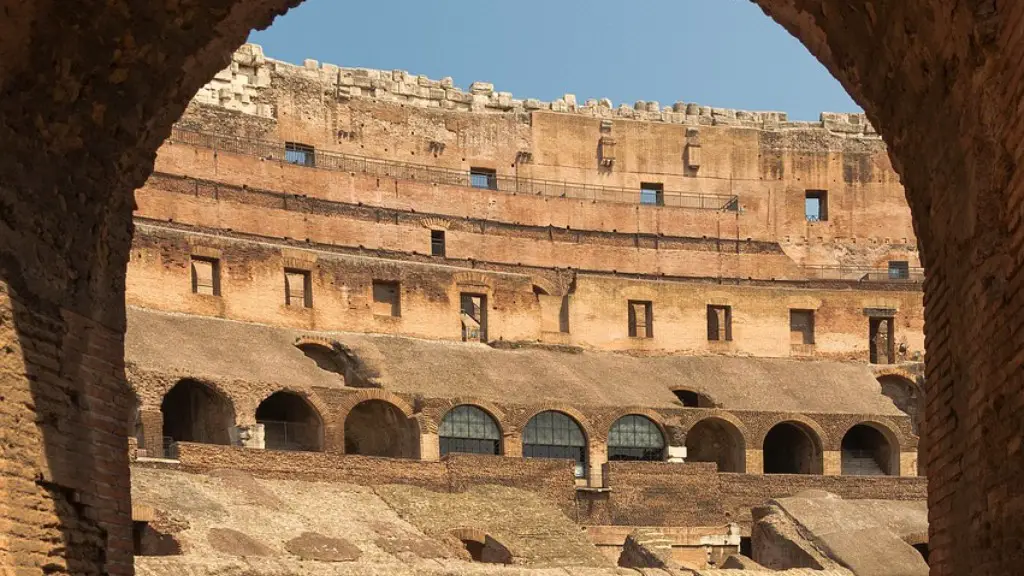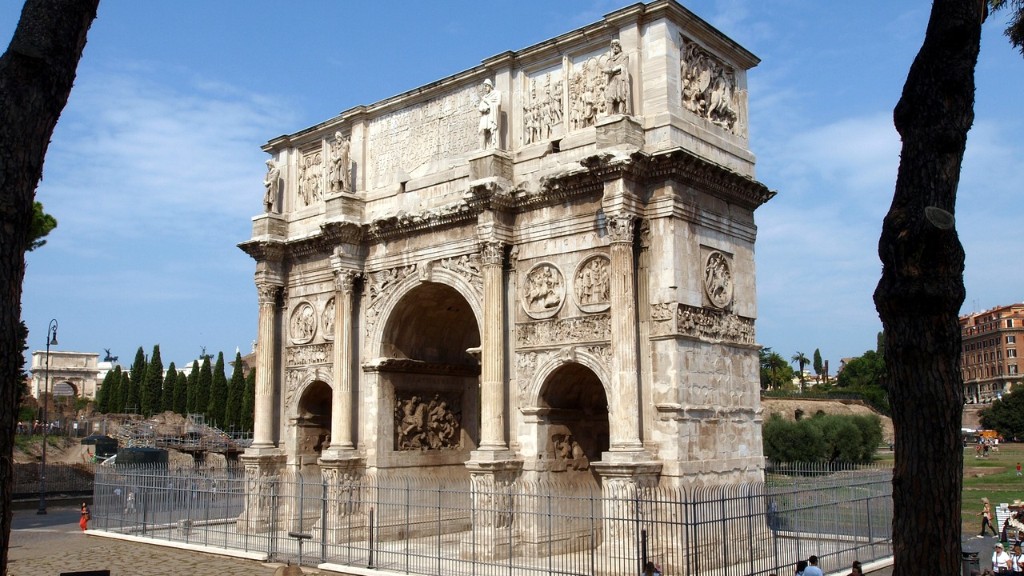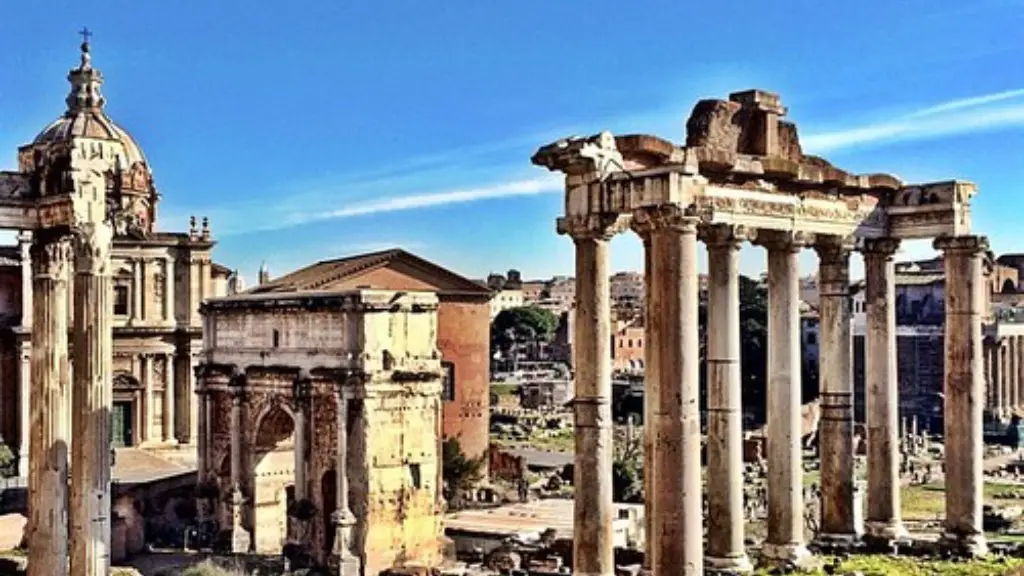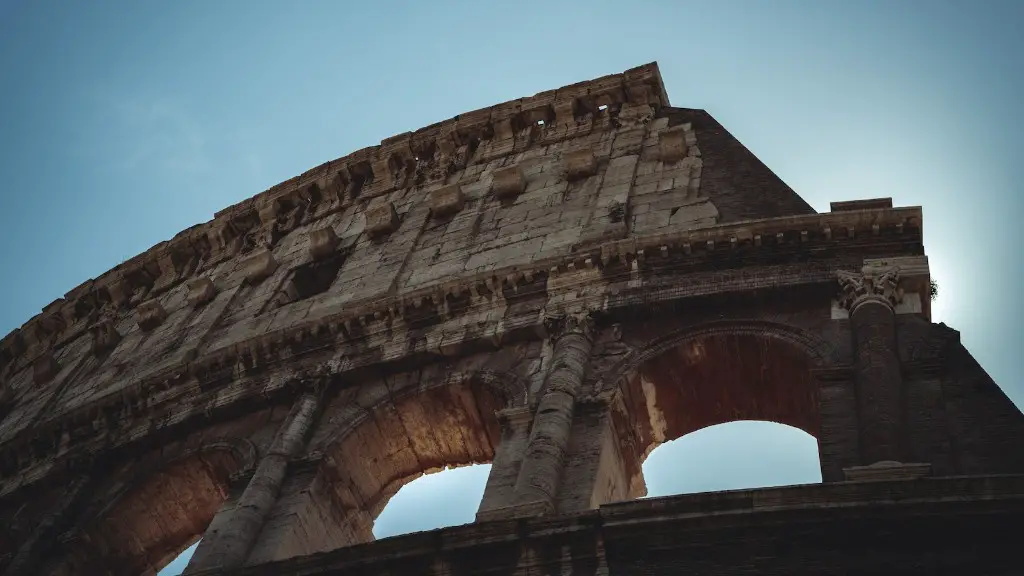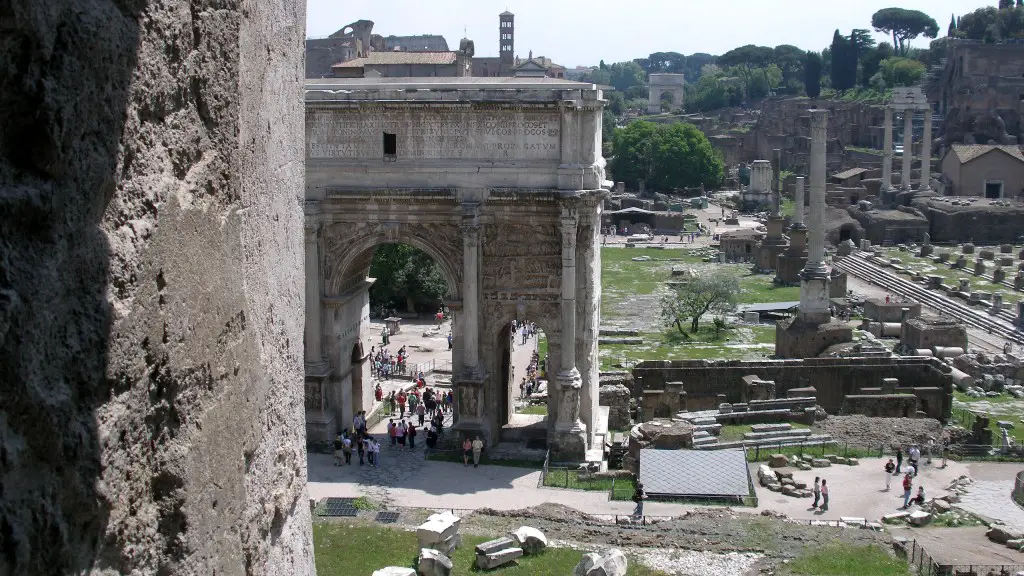Background and History
From the Roman Empire to the Renaissance, stone has been extensively used in architectural, sculptural and decorative purposes in ancient Rome. Ancient Romans were masters of stone use, as evidenced by their achievements in stone sculpture, engineering, and architecture. Ancient Roman artisans constructed massive public buildings, aqueducts, bridges, tombs, and monumental statuary using a variety of stones, from the rich marble of the Pantheon, to the white travertine of the Colosseum.
At the core of the Roman Empire’s successes in engineering, architecture, and sculpture were its stone craftsmen and quarries. Various types of stone were used depending on the nature and scale of a project. Limestone, travertine, sandstone, and lava-stone were widely used, as were, marble and granite.
Types of Stone Used in Ancient Rome
The most commonly used stones in ancient Rome included marble, travertine, limestone, granite, and sandstone. Of these five materials, marble was the most sought after and was used in the most prominent projects throughout the city. Marble was used primarily in sculptures and the most lavish of monuments and buildings, while travertine was the most commonly used stone in building construction.
For sculptures, limestone was the preferred material, as its softness made it easy to carve and it had a beautiful white base color. Granite was most popular for projects of massive proportions and for intricate details due to its strength, durability, and natural beauty. Sandstone, similarly to limestone, was softer and easier to work with than the other stones and was often used in combination with marble for decorative purposes.
Uses of Stones in Ancient Rome
The ancient romans used stones to build famous monuments such as the Colosseum, Pantheon, and the Roman Forum. Marble was the primary material used in construction of these imposing structures. In addition, marble was also used to make statues and other sculptural works of art. The most prominent of these statues were the sculptures of emperors and gods.
Limestone, travertine, and sandstone were also commonly used to build buildings, bridges, and aqueducts. Limestone was typically used in the construction of aqueducts and bridges because of its strength and resistance to water erosion. Travertine was used in the construction of public baths, fountains, and public squares. Sandstone was most often used in the construction of houses, walls, and other domestic buildings.
Granite was used for more monumental projects and sculptures. It was used in the construction of the Colosseum as well as for some of the more impressive statues in ancient Rome. In addition, granite was used for decorative purposes such as floor mosaics.
The Significance of Stone Use in Ancient Rome
The use of stones in the art, construction, and engineering in ancient Rome was a testament to the Rome’s power and glory. Roman engineers and artisans developed sophisticated techniques in working with stones that allowed them to build massive structures out of these materials. In addition, these structures and sculptures served as symbols of power and prosperity.
The stones used in the architecture and other ventures of ancient Rome have become synonymous with the grandeur and majesty of the time period. They are some of the most visible reminders of the success and achievements of the ancient Roman civilization. Marble, in particular, has come to be seen as a symbol of luxury, a reminder of the Roman Empire’s wealth and power.
Exploitation of Stone Resources
Although the use of stone in ancient Rome provided an amazing display of architectural and sculptural invention, it also led to the depletion of certain stone resources. In the Roman town of Baiae, for instance, the travertine stone that was used in construction became so scarce due to over-exploitation that the Romans had to import materials from other locations in Italy.
This exploitation of resources was also experienced in the city of Rome. By the time of Emperor Augustus, stone resources in the city had become scarce, and new materials had to be imported from quarries around Italy. As a result, Augustus had to impose strict regulations on the mining and distribution of stone.
Conclusion of Ancient Stone Use
Stone has been used as a material in construction, engineering, and art since ancient times, and in ancient Rome, it was an especially popular material for these purposes. The most commonly used stones in ancient Rome included marble, travertine, limestone, granite, and sandstone. Marble was the most sought after and was used in the most prominent projects throughout the city, while travertine was the most commonly used stone in building construction.
The grandiose monuments and sculptures throughout the city of Rome served as reminders of the success, power, and wealth of the Roman Empire. The stones used in the architecture and other ventures of ancient Rome have become symbols of the grandeur and majesty of the time period.
Environmental Impact of Stone Use
The extensive use of stone in ancient Rome was a major environmental issue. The Romans used local quarries and stone resources for their activity, and their overexploitation of resources made them scarce and caused increasing deforestation in the surrounding areas.
In addition to their quarrying activities, the Romans also used fire to burn limestone and extract marble from the ground. This process further destroyed the land and released methane and other gasses that had negative impacts on the environment. As a result, the ancient Romans left a lasting ecological impact.
Comparison to Modern Stone Use
When compared to modern stone use, ancient Rome’s stone use may seem primitive in comparison. Today, stone is mostly used in commercial and construction projects, while contemporary art and architecture students rely on newer materials such as plastic and men-made stones.
However, new technologies and stone extraction practices are helping to reduce the environmental impacts of modern stone use. Quarrying methods have become increasingly efficient, and the new technology of hydraulic stone drilling has opened up opportunities for construction and engineering projects that are more sustainable and environmentally friendly.
Advancements in Stone Use
The advances in stone extraction and working techniques have enabled modern architects, engineers, and sculptors to create structures of unprecedented grandeur. Stone is still used for the creation of monuments, large public buildings, and statues. In addition, contemporary artisans are finding new and creative uses for stone, such as creating furniture, jewelry, and even home décor.
This creativity has led to a resurgence in the use of stone. Stone is no longer an outdated material, but a modern and contemporary material for design.
Stone and Art
The use of stone in art has become increasingly popular in recent years. Stone sculptures and reliefs are now commonplace in modern galleries and art exhibitions. Stone has also become popular among contemporary sculptors as a material for indoor and outdoor sculptures and reliefs.
In addition to sculptures, stone art also takes the form of reliefs, paintings, and mosaics. Carved reliefs have become popular especially in churches and public buildings, and stone paintings have been a mainstay in art galleries for many years.
Mosaics have become popular in modern home design and decoration. Stone mosaics are used in tiling for floors, ceilings, and walls, and can also be used for large decorative pieces such as murals and tapestries.
The Legacy of Ancient Rome’s Stone Use
The legacy of stone use in ancient Rome has shaped the way we use stone today. Ancient techniques and practices continue to influence modern-day stone extraction, stone working, and stone art. Stone is still used to create public buildings, monuments, and sculptures, and artisans continue to find innovative and creative uses for the material.
The use of stone in ancient Rome left an indelible mark on art and architecture, and the continued use of stone in modern times is a testament to the skill and engineering prowess of the Romans.
